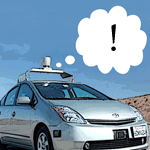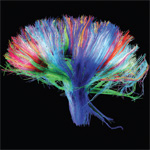“Jihad” is a story/thought experiment about our legal system coming to grips with restorative life insurance. What happens to someone who is charged with a crime committed by his later self? It is also about the Canadian immigrant experience, a few years down the road.
 It’s Canada Day. But he and Laila are not at any of the usual patriotic festivities—they wander the heat-softened asphalt of the Playland midway breathing vivid airs of onion rings, candy floss and puke. They don’t speak, except with clasped hands and their eyes—of lying entangled and sticky on sun-struck sheets, that long holiday morning. The Maple Leaf snaps overhead. Hucksters lean from booths offering three balls, knock down the jugs and win a bear for her—Javeed waves them off, knowing the game is fixed. Now she points to something she wants—a flailing horror of cartoon teacups. He laughs—“No, Laila! My stomach won’t stand it. Let’s try that one” —the ferris wheel, stately benches rising into the blue view in which lovers can lose themselves. But she has pulled away. A carny opens a door and she almost collapses into the arms of Canadian strangers. The machine starts up, leaving him, Javeed the engineer, inspecting the mechanism, greased rods and pistons blackly abused. A bolt is loose. “Laila!” She spins up, and then he knows—but cannot watch her fly off the handle.
It’s Canada Day. But he and Laila are not at any of the usual patriotic festivities—they wander the heat-softened asphalt of the Playland midway breathing vivid airs of onion rings, candy floss and puke. They don’t speak, except with clasped hands and their eyes—of lying entangled and sticky on sun-struck sheets, that long holiday morning. The Maple Leaf snaps overhead. Hucksters lean from booths offering three balls, knock down the jugs and win a bear for her—Javeed waves them off, knowing the game is fixed. Now she points to something she wants—a flailing horror of cartoon teacups. He laughs—“No, Laila! My stomach won’t stand it. Let’s try that one” —the ferris wheel, stately benches rising into the blue view in which lovers can lose themselves. But she has pulled away. A carny opens a door and she almost collapses into the arms of Canadian strangers. The machine starts up, leaving him, Javeed the engineer, inspecting the mechanism, greased rods and pistons blackly abused. A bolt is loose. “Laila!” She spins up, and then he knows—but cannot watch her fly off the handle.
Javeed finds himself on his back under a light blanket, full of panic that begins to fade as he sorts out dream from reality. On his cot in the Detention Centre. Again. How many times has he woken, in just one night, to find himself here? The light is too bright. He understands why they keep a light on. But why so bright?
The first of how many nights?
The first and only! He did nothing wrong. This is Canada, not Tehran; not the hell-hole of Guantanamo either. Canada is a country of peace, as he learned in immigration class, and good government—and a third thing, order—gentle and tolerant, welcoming of newcomers. The lawyer will return and explain everything at tedious length. There will be apologies all round. They will let him go home. Let him go…where? He heard his address had changed. Home to what, exactly?
They said he was charged with…. “That’s insane! You’re talking about my wife and my friend!” But it’s useless to argue with the police. Continue reading “Jihad of the Heart – episode 1”









